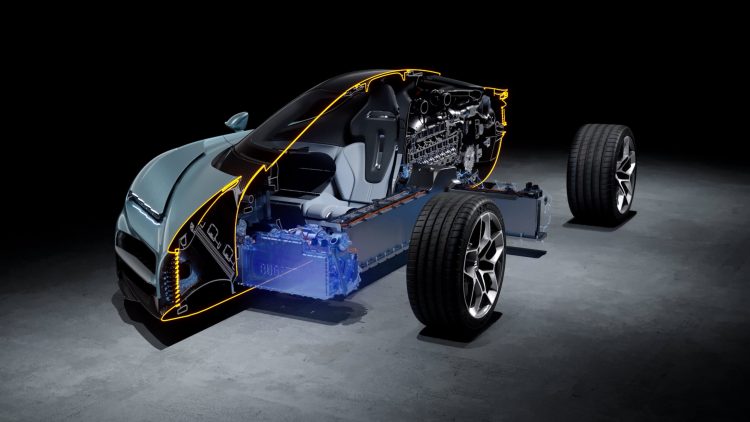Understanding EV Battery Lifespan: Manufacturer Claims vs Real-World Experience
Electric vehicles (EVs) have rapidly transformed the automotive landscape, promising cleaner transport and reduced reliance on fossil fuels. A key component in this revolution is the lithium-ion battery, which stores and delivers energy to power these vehicles. However, potential EV buyers often worry about the battery’s lifespan, fearing expensive replacements or degraded performance over time. Manufacturers typically advertise battery lifespans of 8 to 10 years or warranties covering 100,000 to 150,000 miles. But how do these theoretical values match actual usage scenarios? What really determines how long an EV battery lasts?
In practice, the lifespan of an EV battery can differ significantly from manufacturer projections due to factors including driving habits, charging behavior, environmental conditions, and battery management systems. While advances in battery chemistry and vehicle software have improved durability, understanding the nuances behind battery aging helps owners set realistic expectations and adopt habits that preserve battery health. This article dives into the real-world lifespan of EV batteries, explores key influences on their degradation, and offers practical advice for extending their useful life—helping reduce “range anxiety” and boost owner confidence.
Battery Chemistry and Manufacturer Guarantees: The Starting Point
Most modern EVs use lithium-ion batteries, prized for their energy density, efficiency, and declining costs. However, lithium-ion chemistry inherently experiences gradual capacity loss as it undergoes charge and discharge cycles. Manufacturers’ lifespan claims are generally based on lab testing under controlled conditions that may not represent diverse real-world usage.
For instance, a manufacturer may guarantee that their battery retains at least 70% of its original capacity after 8 years or 100,000 miles. This means that even after this period, the battery will still hold 70% of its initial charge capacity, sufficient for typical daily driving. But these guarantees also factor in typical user profiles, which do not always account for extremes in climate, charging patterns, or driving styles.
Real-world data from long-term EV owners reveals a broad range of battery degradation rates. Some vehicles maintain over 90% capacity after 100,000 miles, while others experience faster drops due to specific conditions. Understanding these conditions is essential for potential owners who want a realistic picture of battery longevity.
The Impact of Fast Charging Frequency on Battery Health
One of the most widely discussed factors influencing EV battery lifespan is the frequency and type of charging. Fast charging—using high-voltage DC chargers—allows EVs to replenish significant charge in minutes, supporting long-distance travel and convenience. However, this convenience comes with trade-offs.
Fast charging generates more heat inside the battery cells compared to slower Level 1 or Level 2 AC charging at home. Heat accelerates chemical reactions that contribute to battery degradation, causing capacity loss over time. Additionally, charging at high states of charge (above 80%) stresses the battery and can promote lithium plating, a phenomenon that reduces battery life.
Frequent fast charging can thus shorten battery lifespan if not managed properly. Experts suggest that regular use of fast charging should be balanced with slower charging sessions to allow the battery to cool and reduce stress. For daily commuting, relying mostly on slower home charging preserves battery health better.
Many EV manufacturers and software systems now include thermal management and charging algorithms designed to minimize damage during fast charging. Nonetheless, the basic physics remain: faster charging speeds increase battery wear rates, especially if done habitually.
Climate and Environmental Effects on Battery Aging
Environmental conditions play a significant role in how quickly EV batteries degrade. Temperature extremes—both hot and cold—can impact battery chemistry and longevity.
High temperatures accelerate chemical degradation, promoting electrolyte breakdown and loss of active material in cells. Hot climates without effective battery cooling systems tend to see faster capacity loss. Some manufacturers have responded by improving liquid cooling and thermal regulation to mitigate heat damage.
Conversely, cold weather reduces battery efficiency and range temporarily but can also affect long-term health. Extreme cold can cause lithium plating during charging, damaging the battery if protective measures are not in place.
Humidity and altitude may also contribute subtly to battery wear but are generally less significant than temperature and charging habits.
Understanding local climate impacts is crucial for owners in very hot or cold regions. In such areas, EV performance and battery lifespan can be improved with parking in shaded or temperature-controlled environments, preconditioning the battery before driving or charging, and avoiding charging immediately after extreme temperature exposure.
Remaining Charge Levels and Usage Patterns Affect Longevity
How much charge an EV battery maintains at any time—known as State of Charge (SoC)—also influences its health. Keeping a battery constantly near 100% or allowing it to regularly drop near zero puts chemical stress on the cells.
Experts recommend maintaining a daily charge between roughly 20% and 80% to maximize battery longevity. Many EVs now provide software options to set maximum charging limits, helping users avoid charging to full 100% unless necessary for longer trips.
Similarly, deep discharges (letting the battery nearly empty) increase wear and may trigger battery management systems to reduce usable capacity as a protective measure.
Driving patterns also matter. Aggressive acceleration and frequent heavy load usage cause higher current draws that increase battery heat and stress. Smooth, moderate driving helps preserve battery life.
Regular use of regenerative braking can aid battery health by reducing mechanical wear and maintaining moderate charge cycles.
Practical Tips for Extending Your EV Battery’s Life
Owners can take proactive steps to preserve battery health and delay capacity loss:
- Limit Fast Charging: Use fast chargers sparingly, reserving them for road trips or urgent needs. Prefer slower Level 2 charging at home for daily top-ups.
- Avoid Extreme SoC Levels: Charge up to 80-90% for daily use and avoid letting the battery drop below 20%. Use vehicle settings to cap charge levels.
- Control Temperature Exposure: Park in shaded, cool places when hot and warm up or cool down the vehicle before driving or charging. Avoid charging immediately after exposure to extreme temperatures.
- Drive Smoothly: Gentle acceleration and deceleration reduce battery strain. Use regenerative braking when possible.
- Keep Software Updated: Automakers often improve battery management algorithms via software updates, optimizing charging and thermal controls.
- Plan for Long-Term Maintenance: Monitor battery health metrics using vehicle apps or diagnostics. Consider professional battery conditioning if available.
By adopting these habits, owners can ease range anxiety and increase the effective life of their EV batteries.

Addressing EV Buyer Concerns and Reducing Purchase Anxiety
Battery longevity remains a primary concern for prospective EV buyers worried about replacement costs and resale value. Transparent information and education from manufacturers and dealers are critical to alleviate these fears.
Many automakers offer warranties covering battery capacity for 8-10 years or 100,000+ miles, providing reassurance. Furthermore, the cost of battery replacement has dropped substantially over the years due to technological advances and economies of scale, and is expected to decline further.
EV resale markets increasingly factor in battery health, rewarding well-maintained vehicles. Battery recycling and second-life applications—such as energy storage for homes—add sustainability benefits to end-of-life batteries.
Ultimately, understanding the realistic lifespan and factors influencing battery degradation helps buyers make informed decisions. It empowers them to see EVs not just as green vehicles but as reliable, durable investments when cared for properly.
The Road Ahead: Innovations to Boost Battery Durability
Looking forward, ongoing research and innovation aim to push EV battery lifespans further while reducing degradation. New chemistries such as solid-state batteries promise higher stability and longer cycle life. Improvements in battery management systems, better thermal controls, and faster yet gentler charging methods are under development.
Manufacturers also explore battery modularity and easier replacement strategies to lower lifecycle costs. Combining these advances with user education will help EVs realize their full potential as long-lasting, low-maintenance transportation solutions.
Conclusion: Realistic Expectations and Responsible Usage
The real lifespan of an EV battery depends on multiple interacting factors including charging habits, environmental conditions, and driving style. While manufacturer warranties offer helpful guidelines, actual battery longevity can vary widely. Frequent fast charging, extreme temperatures, and deep discharges accelerate capacity loss, while thoughtful usage can extend battery health.
Prospective and current EV owners should approach battery lifespan with realistic expectations and practical care strategies. By understanding and managing key influences, they can confidently enjoy electric driving with reduced anxiety over battery replacement costs or range degradation. As technology progresses, EV battery durability will improve further, supporting wider adoption and sustainable mobility for years to come.


































Discussion about this post